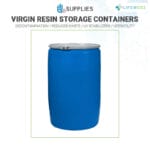What is Hazardous Waste Removal?
Hazardous waste removal refers to the process of safely collecting, handling, transporting, and disposing of waste materials that are dangerous to human health or the environment. Hazardous waste can include chemicals, biological materials, radioactive substances, or industrial by-products that are toxic, flammable, corrosive, or reactive. The removal of hazardous waste must adhere to strict guidelines to prevent contamination, accidents, or long-term environmental damage.
Hazardous waste removal is crucial in industries such as manufacturing, healthcare, chemical processing, and laboratories where these materials are frequently generated. Proper removal ensures the safety of workers, the public, and compliance with regulations set by government agencies such as the Environmental Protection Agency (EPA) and Occupational Safety and Health Administration (OSHA).
Types of Hazardous Waste
Hazardous waste can take several forms, including:
1. Chemical Waste
This includes solvents, industrial chemicals, or substances that can be toxic, corrosive, or reactive. Examples are acids, bases, and volatile compounds from chemical manufacturing or processing.
2. Medical and Biological Waste
Biohazardous materials like contaminated needles, tissues, or infectious agents fall under this category. Healthcare facilities generate a significant amount of medical waste, which requires special handling.
3. Radioactive Waste
This type of waste includes materials that emit harmful radiation, such as nuclear by-products or medical isotopes used in radiation therapy.
4. E-Waste
Discarded electronic equipment like batteries, computers, and phones contain hazardous materials, including lead and mercury, which must be carefully managed.
Importance of Hazardous Waste Removal in Enterprises
Hazardous waste removal is essential for ensuring workplace safety and protecting the environment. Proper handling and disposal of hazardous materials are mandated by regulatory bodies like the EPA and OSHA. Non-compliance can result in significant penalties, legal action, and environmental damage. Businesses must have waste removal procedures in place to manage waste safely, reduce liability, and maintain compliance.
For enterprises, ensuring efficient hazardous waste removal not only protects employees but also supports sustainable business practices. It minimizes the environmental impact and aligns businesses with regulations and industry best practices.
Managing Hazardous Waste Removal with Enterprise Software
Enterprise software plays a crucial role in streamlining hazardous waste removal by offering tools for tracking, compliance, and safety. Key benefits include:
- Inventory Management: Software tracks hazardous waste volumes, ensuring safe storage, labeling, and timely disposal.
- Compliance Monitoring: Automated compliance features help businesses stay up to date with regulations, avoiding fines and penalties.
- Employee Training: Enterprise software tracks training and certification of employees responsible for handling hazardous waste, ensuring all protocols are followed correctly.
With enterprise software, businesses can improve the safety, efficiency, and compliance of their hazardous waste removal processes.
« Back to Glossary Index

















